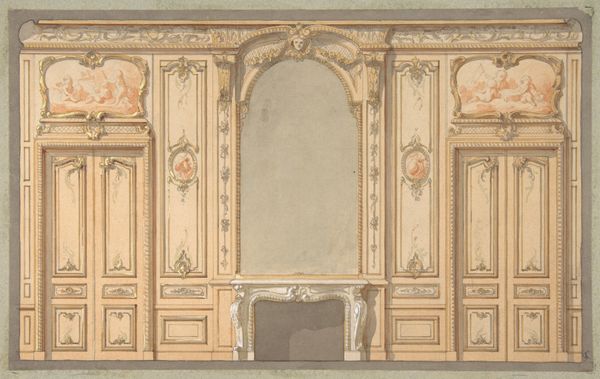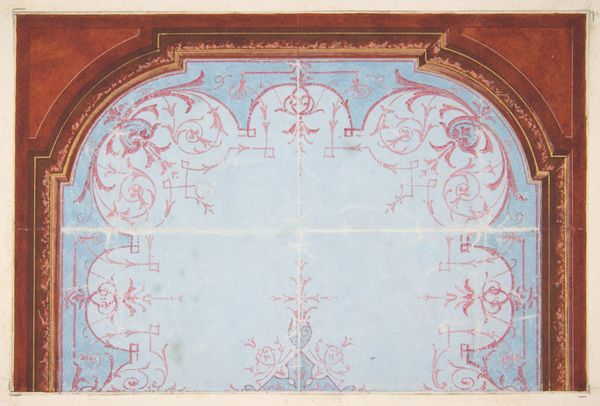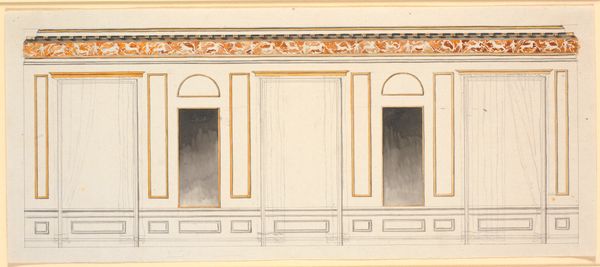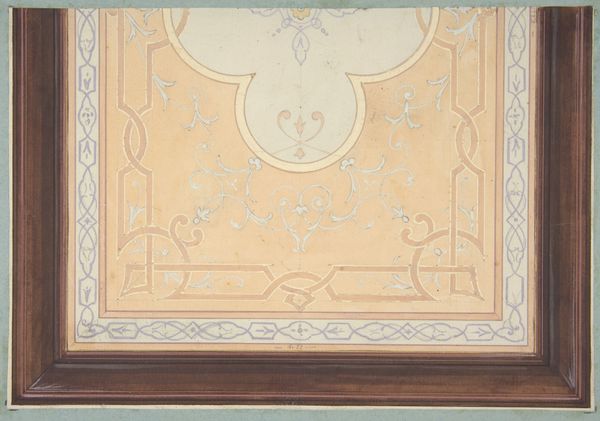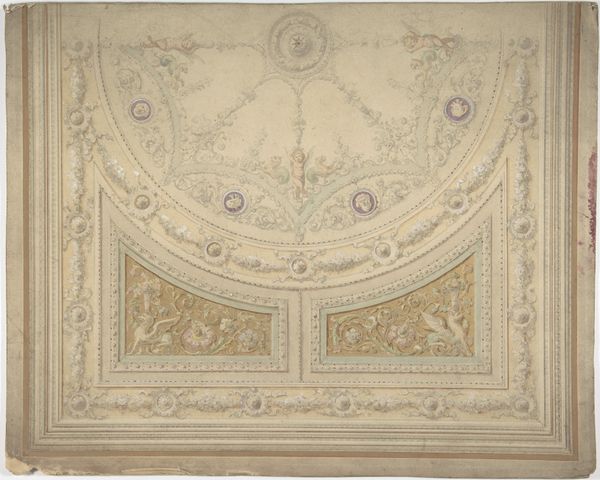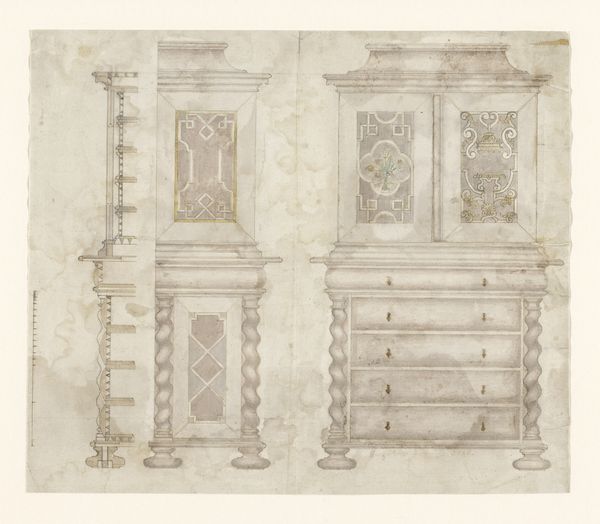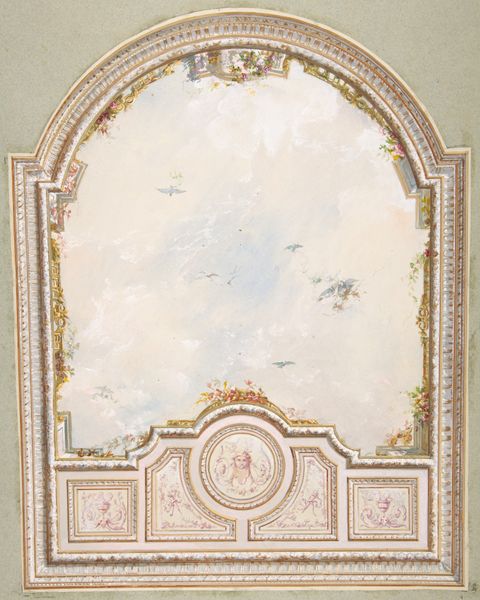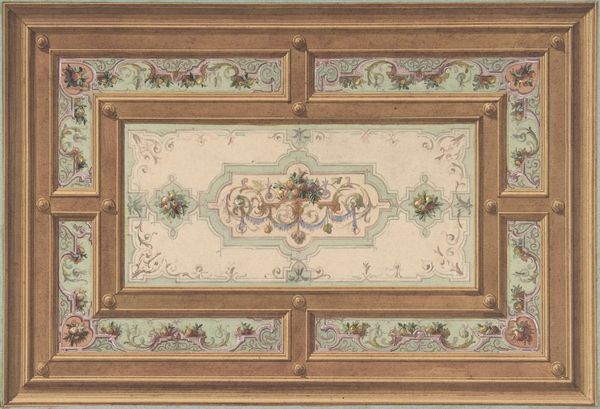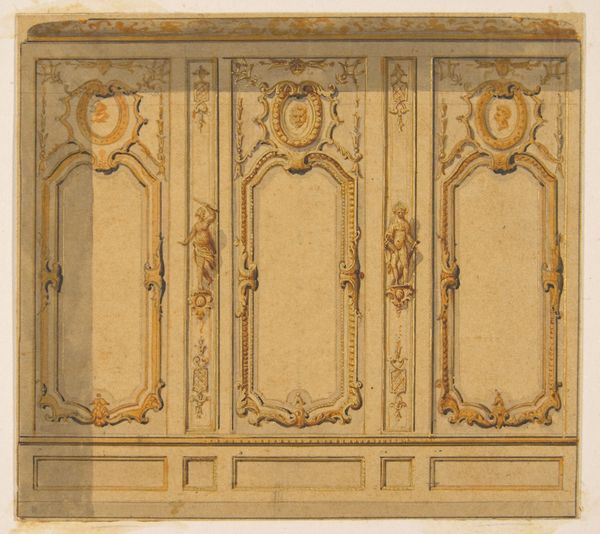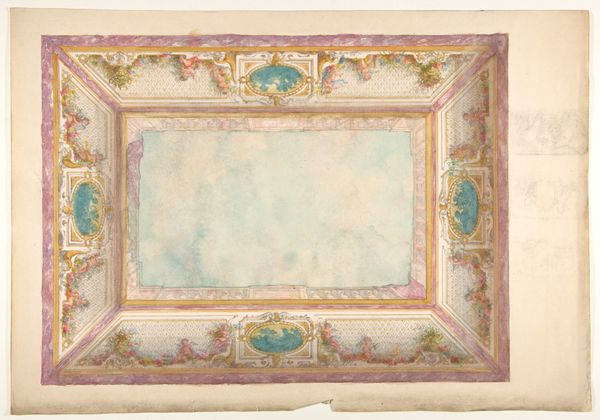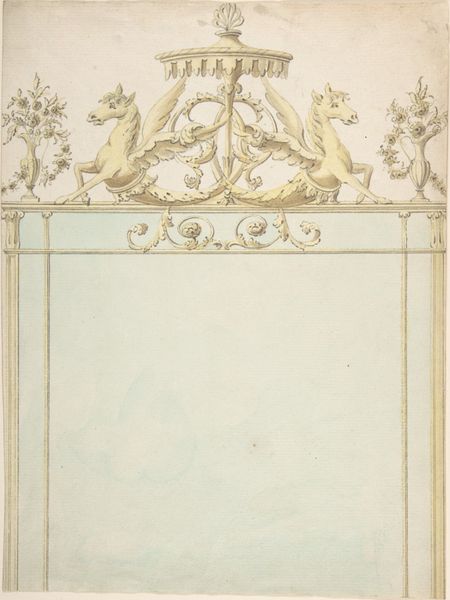
Elevation of a salon decorated in Louis XV style 1820 - 1897
0:00
0:00
Copyright: Public Domain
Curator: At first glance, it evokes a sense of opulence. The pastel palette, the delicate curves...it just screams high society. Editor: Exactly. What we're viewing here is a print titled "Elevation of a salon decorated in Louis XV style," created sometime between 1820 and 1897 by Jules-Edmond-Charles Lachaise. It's currently held at the Metropolitan Museum of Art. Curator: And it is entirely about the interior architecture! Look at the intricacies of the wood paneling; it shows a dedication to craft that often gets overlooked when discussing this era. Think about the labor that went into each individual flourish and curve. Editor: Indeed, it provides us a window into the performance of status within a specific historical context. The Rococo style was meant to impress, projecting wealth, refinement, and a certain idea of "good taste." The inclusion of Cupid figures above the doorways…a nod to leisure and pleasure, both visual and lived experiences. Curator: Consider also the materials implied: high-quality wood for the paneling, likely sourced from specific regions and transported by skilled labor. The mirror above the fireplace serves not just as a decoration, but also as an indicator of wealth, owing to glass-making processes. Editor: Precisely. The fireplace, although minimally depicted, also represents social gatherings. Salons weren't simply architectural spaces, but staged environments for intellectual and political discourse. Images of cupids reinforce the theatrical nature of those interactions, almost framing every exchange with the aesthetics of romantic comedy or amorous pursuit. Curator: This rendering underscores an awareness of design. While depicting the salon's features, the medium itself demonstrates that artistry wasn't confined solely to painting or sculpture. Prints such as this allowed access to trends of style. Editor: Reflecting on it, this image speaks volumes about the construction of taste, access, and social dynamics during that period. The fact that we’re viewing a print also prompts contemplation about how images reproduce the dominant tastes for new audiences. Curator: It definitely reframes how one sees labor and accessibility—an eye into both the literal creation, as well as access to imagery during that time.
Comments
No comments
Be the first to comment and join the conversation on the ultimate creative platform.
